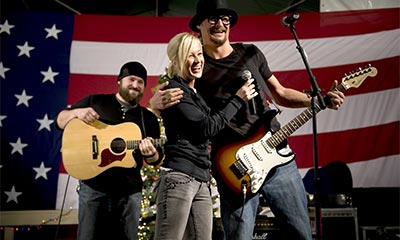How To Choose The Right Projector For Your Event
Imagine that you are in the planning
phase of your next event production services
in NYC and that you will have to lease projectors. Do you feel totally
sure about choosing it?
Counting on the help of the entire supplier company
team to answer your questions is very important; but for them to be able to be
assertive, having a well-designed briefing is essential so that there are no
flaws that could compromise the success of the event.
What
information is relevant to the correct choice of event projector?
·
Dimension of the space where the event will be
held
·
Participating public
·
Light conditions of the chosen location
·
Understand what type of content will be designed
·
Know what type of scenography will be used
What type of
scenography will be used?
Understanding especially the type of scenography
that will be used helps in adapting the ideal projection for the event. In many
cases, the companies that do projections are different from those that do the
scenography; thus, ideally, teams from both fronts should know details of how
they will work at the briefing meetings - preventing the projection from being
jeopardized.
Closing a contract with a team that works both with
projectors and with scenography facilitates the process of assembling and
executing the projection , as the teams will have a natural rapport and will
understand the demands requested by the client.
From this data you will be able to have an adequate
consultancy.
And why is
each of them important for choosing the right projector?
Understanding the dimensions of the space where the
event will be held helps in estimating the distance from the stage, the
disposition of the guests and which elements will compose the entire
environment; all this will influence the type of projection to be hired.
The importance of knowing the estimated number of
participants is in directing the sound settings to the projector and in the
correct positioning of the screens. In addition, it will help in the most
appropriate classification of the event: whether it will be small, medium or
large.
And why do
lighting conditions interfere with the choice of projector?
We usually find event spaces that are planned
providing light incidence control. When this is a fait accompli, the most
appropriate thing is to use projectors with less brightness.
If this control is non-existent, it is recommended
that the brightest projectors be hired.
The luminosity of environments is directly related
to the amount of lumens and also to the size of the projection screen.
In time, the lumen is a measurement unit linked to
optics; when related to projectors, they define the definition of the image to
be projected and also how dark the environment should be in order to guarantee
better visibility.
The appropriate event projector must also account
for the absence of light in black and also in dark colors, in order to avoid
faded images. This can be measured by the contrast ratio: the higher its ratio,
the greater the tolerance for dark colors.
What about
projected content?
It is important to know what content will be shown
on the day of the event to ensure the quality of the projection. Texts? Photos?
Videos? Web interactivity? Sheets or Charts? Each piece of information matters
when choosing the right projector for your event.
Projector resolution is measured in pixels. The
more pixels, the sharper the image will be. Thus, projectors used in large
auditoriums, for example, require a much higher resolution than those used in
presentations projected in a smaller meeting room.
In large spaces, reserved for conferences and
seminars, 5,000 ANSI lumen projectors are used, which require 210-inch screens.
As for projectors above 10,000 lumens, they are also recommended for large
events in open spaces, with an incidence of light, such as multimedia
conferences, film projections, HD videos, projection mapping, 210-inch screens
are recommended. For medium-sized events, 150-inch screens for projectors with
3,000 to 3,500 ANSI lumens are recommended. Smaller screens are recommended for
1000 to 2000 ANSI lumen projectors, typically used in small, dark spaces such
as a boardroom.
New in this market are laser light source
projectors. Among numerous advantages are excellent image quality, low
operating costs and a lifetime of up to 20,000 operating hours. This new laser
technology provides long-lasting brightness for projection in classrooms,
auditoriums and boardrooms.
Understand a little more about
projection here: How
can Lighting Influence the Success of Your Event?







Comments